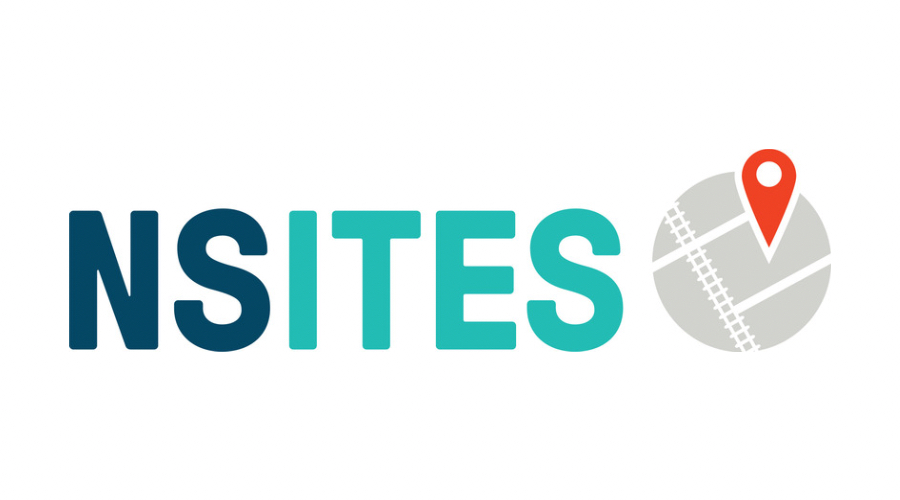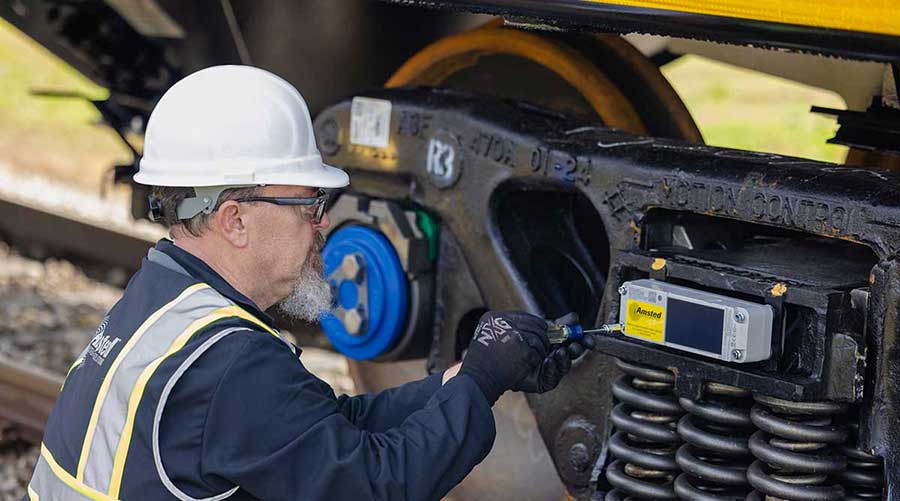Stay updated on news, articles and information for the rail industry
December 2016
Rail News: Rail Industry Trends
Outlook 2017: Class I railroads expect another grind-it-out year
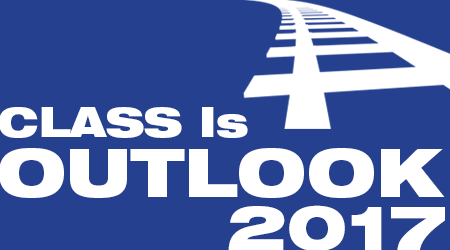
Amid a murky post-election business climate, Class I CEOs expect to continue pounding away in 2017 to uncover what traffic-growth opportunities they can
Compiled by Jeff Stagl, Managing Editor
Nothing like a high degree of uncertainty heading into 2017 after dealing with a lot of volatility throughout 2016. That’s the position Class I chief executive officers find themselves in, which makes it difficult to gauge their respective railroad’s chances of growing revenue and traffic next year.
The contentious presidential election didn’t provide much clarity on the economy’s direction or business climate’s condition after a mostly sluggish 2016 spelled traffic drops and revenue declines for Class Is. And with the new year about to dawn, there were more questions than answers about the impending administration’s business-building objectives.
For example, several media outlets last month questioned whether President-Elect Donald Trump’s proposal to “tear up” the North American Free Trade Agreement would negatively impact Kansas City Southern, which generates a good chunk of its annual traffic and revenue from business in Mexico. But as of mid-November, there wasn’t enough information available to make an informed decision, says KCS President and CEO Patrick Ottensmeyer.
“The truth is, we don’t know yet,” he says. “The government is run by checks and balances. It would take congressional action to get something done that would be drastic.”
KCS should have a seat at the table to address anything that could directly impact the company, Ottensmeyer believes.
“We want to engage in the dialogue,” he says.
In the meantime, KCS isn’t doing anything differently despite the murkiness. Ditto for the other Class Is. They plan to stay the course until there’s a reason to alter it.
Following are comments from Class I leaders about how they expect to continue “grinding it out” next year, as CN President and CEO Luc Jobin characterizes it. In addition to Ottensmeyer and Jobin, Progressive Railroading received emailed responses to “Outlook 2017” questions from BNSF Railway Co. President and CEO Carl Ice; CSX Chairman and CEO Michael Ward; Canadian Pacific CEO E. Hunter Harrison; and Union Pacific Railroad Chairman, President and CEO Lance Fritz. Norfolk Southern Corp.’s responses were submitted by Executive Vice President and Chief Marketing Officer Alan Shaw.
The online version of this December issue article includes longer responses from some of the seven execs, as well as Outlook 2017 commentary from OmniTRAX Inc. CEO Kevin Shuba (see far below).
Q: What's your take on the potential for volume growth in 2017? Are there certain commodities/business groups you feel pretty good about heading into next year?
Fritz: As outlined in our third-quarter earnings release, the macro-economic environment faces several significant challenges: an unstable global economy, a relatively strong U.S. dollar and continued soft demand for consumer goods, specifically those shipped via intermodal containers. However, certain segments of the economy are showing signs of life, and we’re optimistic about volume growth in some business segments. For example, increasing crude oil and natural gas prices are encouraging indicators for our coal and shale-related businesses. We also were pleased to see strength in the overall grain market and expect lumber to be stronger as housing starts continue expanding. Additionally, light vehicle sales remain robust, forecasted to finish 2016 less than half a percent lower than 2015’s record rate, still well above levels immediately following the Great Recession.

We expect continued headwinds for intermodal, with international volumes adversely impacted by a strained ocean carrier industry which saw three major mergers and a bankruptcy in 2016. Thanks to our strong and diversified franchise, we are developing opportunities in intermodal, offering shippers unique “matchback” options. It works like this: we help our agriculture-based shippers find ways to reuse empty containers returning to Asia. Additionally, relatively low natural gas prices have made the United States a low-cost industrial chemicals and plastics producer, providing us opportunities to grow this business, which typically moves from the Gulf Coast to Asia.
Despite economic challenges, we will continue doing what we do best: operating a safe, efficient and productive rail network. We remain committed to strengthening our customer value proposition and driving new business opportunities. As they arise, we are well positioned to respond quickly and efficiently. Most important, we expect our unrelenting safety focus to yield positive results on our way to an incident-free environment.
Harrison: We have had a great deal of success managing the sluggish North American economy by focusing on what we can control — our costs and our service. Our industry-leading operating plan and continued focus on improving service to our customers means we are well positioned to capitalize on increasing volumes heading into 2017. I sometimes get asked whether we have more room to make the railroad more efficient. My answer is yes, we do. As we have done since this management team took over in 2012, we have to remain focused on the basics.
One of the basics is to do what we say we are going to do, and now we can measure that better than ever through Trip Planning, which we recently implemented. With trip plans, we lay out in advance the path that each car will take as it crosses our system, including which trains it’ll connect with at each yard. This granular data enables us to be more precise in our service offerings, and to be even more accountable to our customers. We believe this is the type of improvement that reinforces our credibility in the marketplace. In terms of volumes, we see reasons for optimism going into 2017. We’re seeing strong fundamentals in the coal, potash and grain markets. This fall’s Canadian grain crop is reported to be close to record levels, but its harvest and movement has been delayed by weather.
On the intermodal side, we provide a service that appeals to service-oriented customers. Our new offering in the Chicago-Montreal cross-border service, for example, has helped to drive double-digit volume growth on overall cross-border business. CP has key intermodal customers that are growing with us, which bodes well for us heading into 2017.
Ice: We believe we will continue to see a challenging economic environment going into 2017. Economic cycles are occurring with greater volatility and unpredictable durations, which makes it harder to forecast accurately. At BNSF, we continue to overcome these challenges by being nimble and doing everything we can to adapt quickly to change. The consumer, which drives approximately 70 percent of the U.S. economy, is directly tied to our intermodal business. The fact that consumer spending is currently one of the very few bright spots in our economy will drive growth in our domestic intermodal business, with much of that growth consisting of freight that used to move solely by truck. We believe there are still significant over-the-road conversion opportunities in the intermodal market. And, because of our unique model of partnering with asset based companies to provide the most efficient form of intermodal to shippers, we offer the best solution for capacity.
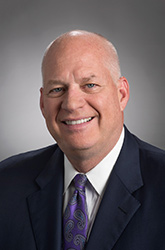
We also anticipate seeing some continued growth in our agricultural business. Even in a soft world economy, we believe there will be world demand for soybeans and corn. History tells us the U.S. farmer will embrace efficiency and productivity to win the low price battle in the global markets. We will remain focused on being responsive, efficient and communicative to give our customers the opportunity to keep their agricultural products moving. We expect the U.S. industrial recession in certain sectors to continue, reflecting low energy prices, the strong dollar, lower coal demand at utilities and high inventories across the supply chain. Continued declines in the coal and petroleum markets will negatively impact growth going into next year. We see the coal market in a structural change with declines continuing as time goes on. For decades, coal has been the primary energy source for generating electricity in the U.S. However, low natural gas prices and the uncertainty created by regulation have driven a fundamental shift in electricity generation. That is a major shift for the rail industry, which has traditionally moved significant volumes of coal.
Railroads are adapting and evolving as the mix of traffic changes — we are becoming more agile. While the structural change in coal markets is an undeniable headwind for railroads, it’s also an opportunity to leverage capacity to provide new service offerings. A good example of leveraging our capacity is our [September] announcement for intermodal service between the Pacific Northwest and Dallas/Fort Worth. By taking advantage of capacity in the central section of our network, which traditionally has been our coal corridor, we are now able to offer five-day-a-week service from the PNW to Texas that is two days faster than any other intermodal options and comparable to single-driver, over the road trucking options. Before now, offering this service simply wasn’t compatible with the coal volumes that moved through this corridor.
Another upcoming opportunity is the anticipated growth in the production of plastic resins. Because raw materials account for up to 70 percent of the total cost for plastic resin production, today’s cheap natural gas makes the U.S. one of the most cost-effective producers. We were able to recognize this market opportunity early on and are now working to connect resin producers in the Gulf Coast region to international packagers while leveraging container capacity at BNSF’s Alliance Intermodal Facility in north Fort Worth, Texas. Covered hoppers full of bulk resin material from the Gulf Coast will move to our Alliance hub, where the product will be packaged and then loaded into intermodal containers and moved on West Coast-bound intermodal trains for export. The packaged resin shipped through Los Angeles/Long Beach, Calif., will reach locations in Asia nearly one week faster than products shipped via ocean vessels from Houston.
Going forward, we will continue to look for opportunities like these to further enhance our service offerings. We will be closing 2016 having invested $4.1 billion on our railroad to ensure our network continues to be in the best shape it’s ever been. In the future we will do what we have always done in terms of matching our investments to what we believe will be necessary to handle anticipated traffic levels and remain focused on providing our customers with the consistent, flexible and efficient service they expect from our railroad.
Jobin: From a carload perspective, 2016 has been characterized by continued weakness in some energy markets and in intermodal shipments as a result of slower global trade, compounded by the Hanjin bankruptcy. As we look to 2017, we feel more optimistic about volume potential, although the economic backdrop in both Canada and the U.S. remains sluggish. We continued to see relative strength in shipments pertaining to the U.S. consumer, including housing-related shipments and automotive. Grain shipments in both Canada and the U.S. are expected to benefit from bumper crops and our energy business — specifically crude oil and frac sand — has stabilized and we are seeing improvement.
Intermodal volumes across North America and for CN are weak but we remain optimistic, particularly in the international segment as we continue to leverage our industry-leading service. We are ready to accommodate the port expansions at both Prince Rupert and Vancouver that are expected to be completed in the second half of 2017.
In 2016, we maintained our capital spending and we’ll continue to reinvest in our business and infrastructure so we are ready when volumes pick up momentum. We are committed to providing long-term value and remain focused on our successful approach of supply chain focus while balancing operational and service excellence.
Ottensmeyer: KCS is optimistic about the potential for volume growth in several key segments of our business. As a company, we have prioritized the need to strategically prepare for multiple growth opportunities across our network through capital investments and operational health, and we feel well-positioned for 2017. These growth opportunities include, but are not limited to, increased automotive production in Mexico, Gulf Coast petrochemical build-outs, a new terminal opening at the Port of Lazaro Cardenas in Mexico and the front-end of Mexican energy reform.

In addition to new business opportunities, current economic projections are indicative of modest growth in both the U.S. and Mexico. We believe this could be a positive aid in our commodity groups more closely linked to the economy, such as intermodal and industrial and consumer.
Shaw: Norfolk Southern is optimistic about our business prospects in 2017. Our improved service product and network performance position us to continue to attract business from highway to the rail, not only in intermodal containers, but in box cars, gondolas, hoppers and multilevels.
• Intermodal: Our intermodal franchise is strong. Our port partners are actively adding capacity to accommodate increased international trade through the East Coast. Relatively loose truck capacity could tighten next year with the introduction of new regulations for Electronic Logging Devices and with the normalization of inventory levels.
• Automotive: Our automotive customers are confident that North American vehicle production has hit a plateau, not a peak, so activity in this market should remain high.
• Chemicals: Our chemical customers who produce plastics are optimistic about additional plastics production over the next few years as the industry benefits from lower feedstock prices associated with shale drilling.
• Metals: Our metals customers are contending with a global oversupply of steel. Prices, however, have increased over the last year with the introduction of anti-dumping tariffs. As the industry resizes, we can help our customers reconfigure their supply chains.
• Coal: We have seen some near-term optimism in this market due to the hot 2016 summer and rising natural gas prices. Export markets are starting to firm as coal production in China and Australia has been taken offline, which should make U.S. coal more competitive in the global marketplace.
Ward: The overall economy continues to show slow, measured growth, while the industrial economy has been challenged by a strong U.S. dollar and the changes in the energy market, which is reflected in negative IDP over the past few quarters. Although the housing sector continues to grow and auto remains strong, the broader industrial portfolio and energy sector remain challenged by low commodity prices and other market-specific drivers.
That said, if you take out energy-related markets, we feel pretty good about 2017. We expect to see volume growth in our merchandise and intermodal markets, with continued success in highway-to-rail conversion in our domestic intermodal market. In addition, we see a reasonably healthy environment in automotive, agriculture and housing markets.
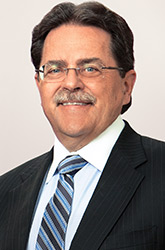
When it comes to the energy-related markets, we again expect crude oil volume to decline. With coal, we have looked at several scenarios and outcomes will depend upon weather and several other factors; we know that volume will remain depressed against historical levels but it’s too soon to make any definitive predictions about how the year will play out.
As we manage through the current dynamic business environment, we are committed to reshaping the company to maximize opportunities moving forward, driving financial performance by aggressively managing costs and delivering record efficiency savings while remaining focused on meeting or exceeding our customers’ expectations. The transformation into the CSX of Tomorrow requires growth and increased profitability in our merchandise and intermodal businesses, while preserving the business value of coal as it becomes a smaller part of CSX going forward.
Continuing to match resources to demand, combined with our ongoing initiatives to support network fluidity, form the foundation to maximize future merchandise and intermodal growth opportunities. When it comes to intermodal, with continued population growth as well as challenges facing the trucking industry, we remain confident in the long-term secular growth prospects for domestic intermodal.
Q: What's your biggest concern in terms of any potential obstacles to business growth in 2017? What else is on your mind heading into next year?
Fritz: Union Pacific is proud to safely and efficiently haul the goods Americans use daily. In 2016, we spent about $3.6 billion on capital initiatives, such as infrastructure replacement, positive train control implementation and locomotive purchases. However, regulation under consideration by the Surface Transportation Board (STB) could have a negative impact on our industry’s future by reversing many of the positive outcomes of the Staggers Act, which fostered the vibrant and thriving railroads of today.
The STB’s mission is maintaining a balance between rail and shipper interests. We believe the board successfully balanced those interests over the past 20 years, reducing regulation to allow free competition within the marketplace. Today, the STB is considering a number of proposals that could turn back the clock, including new access rules, re-regulating different commodity groups by eliminating exemptions and plans to examine the concept known as revenue adequacy, which would directly impact the rail industry’s long-term health. Union Pacific is working diligently to ensure policymakers consider a holistic regulatory perspective before rendering decisions on the various proposed rules.
Our commitment to operating a safe, efficient railroad will never waiver. But we must be able to operate in a free market, one that allows us to invest in our infrastructure and grow business across our franchise, delivering value to our employees, communities, customers and shareholders.
Harrison: What we’re seeing is real volatility in commodity prices, which makes it difficult to predict what our customers’ needs will be next year. We simply can’t control that, so our obligation is to be ready for whatever happens. That means continuing the push for efficiency and right-sizing our resources based on facts on the ground. There are always factors that are outside of our control, but CP is a disciplined railroad, and we’ll control the factors that we’re able to.
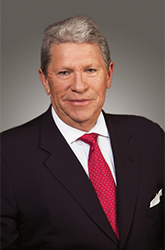
In 2016, despite decreased revenues tied to a sharply declining crude volumes, our business model continued to perform on the cost side. Our commitment to efficiency, asset optimization and operational excellence produced more operating ratio records. We will continue to seek out ways to move that performance forward in 2017.
Ice: We are paying close attention to freight-rail economic regulation that is moving forward at the Surface Transportation Board. The board has opened multiple and overlapping rulemakings, proposing to change almost every element of the current economic regulations of the industry. These rulemakings were begun before we started to see the rapid decline in coal markets. Current regulations are based on sound economic principles and have allowed railroads to respond to markets, improve revenues and reinvest. The board must take the current economic climate into consideration as they finalize these rules or the consequences to our industry could be sizable.
Another concern for BNSF is the current state of permitting in our country. We need public and government support for supply chain infrastructure development if we’re going to remain competitive in the U.S. Yet, more and more we are facing opposition focused on particular commodities like crude oil and coal, and the permitting process has become a weapon to stall or stop new projects.
Permitting is not bad, it serves a good purpose. But it is a problem when it is used by people who are opposed to a project or a particular commodity to slow down or even stop a project. The inability to build new infrastructure becomes everyone’s problem because it drives up the cost of doing business in these states and ultimately hurts competitiveness.
Jobin: The economic environment remains uncertain, but we continue to grind it out, managing the business and doing what's right for our customers. With our innovative commercial team and industry-leading railroaders, I feel very good about CN’s future. We have a tremendous franchise and an energized workforce from the front-line supervisors to the new executive leadership team. I want to build on the momentum of my predecessors while we leverage and deploy more technology to continue to make advancements in terms of safety, productivity, and service.

We're predicting a more normal winter than we had last year but no matter what the conditions are, you can expect CN to perform at an industry-leading level. While the economy has been weak, CN has invested substantial capital to ensure that the railway has added resilience and the capacity to accommodate volume growth. CN also will remain engaged in ongoing discussions about the railway regulatory environments in Canada and the United States.
In the end, it’s about teamwork, innovation and empowerment that allows our greatest resource, our people, to advance our operational and service excellence agenda well into the future.
Ottensmeyer: We believe that we are well positioned for growth opportunities in 2017. However, any weakness in economic growth factors and/or commodity markets can create negative impacts to our consumer, energy, and intermodal markets. Furthermore, weakness in the Mexican peso seen throughout 2016 has been a contributing headwind to certain segments of our business, and we remain conscientious of continued impacts in future years.
Lastly, as we begin the transition from one U.S. administration to a new one, we are optimistic that the new administration’s policies will foster economic growth and rail industry regulatory relief. In regard to KCS’ exposure to Mexico, the President-elect’s team has indicated that there will be a process for any reshaping of America’s trade policies which could include reforming NAFTA. KCS understands this would include a study on what the ramifications of withdrawing from the agreement might be.
Moreover, our company believes that the North American Free Trade Agreement (NAFTA) has been good for the U.S. and for job creation. NAFTA has supported significant growth in trade with Mexico and Canada since 1993, with about 390 percent trade growth with Mexico alone, and in turn supports about 14 million U.S. jobs. With all of this considered, KCS remains optimistic about the future of both its domestic and cross-border businesses.
Shaw: Going into 2017, we will continue to adapt to evolving market conditions by focusing on efficiency and asset utilization and superior customer service. Thanks to the efforts of our dedicated team of NS employees, we are steadily improving service and network performance. New service products will allow us to grow across our different lines of business.
We’re accelerating productivity. We’re tightening down on capital. We’re monetizing assets. We are firmly focused on the three pillars of our business model: service and safety, stewardship of resources and leveraging both of those for growth.
Ward: On the regulatory front, we are troubled. Railroads need balanced economic regulation to invest and drive economic expansion and job creation. For most of the 30 years since the Staggers Act was adopted, the Surface Transportation Board respected its requirements to achieve national transportation goals. However, in the past few years we have seen an extraordinary level of activity from the STB in multiple areas that has created a growing concern in the rail industry about the critical regulatory framework.
This includes activity or consideration of changes in the areas of revenue adequacy, forced switching, repeal of exemptions on competitive markets, costing changes and yet additional rate case procedures. The industry will remain focused on balanced regulation and we are looking to the new administration to refocus on this important issue.
A few additional thoughts:
• Significant work lies ahead related to infrastructure investment, not only to streamline permitting processes so that critical transportation infrastructure can be built in a timely and cost effective manner, but to help increase public awareness of freight rail’s value and thus build additional support at state and local levels for capacity enhancements.
• Advances in technology offer further improvements in safety, service and efficiency if a proper and equitable regulatory balance is applied to encourage innovation versus forced, prescriptive and backward-looking mandates.
ONLINE ONLY
Q: What are your business predictions for 2017? What trends might continue next year?
Kevin Shuba, OmniTRAX Inc. CEO:
Commercial
The biggest negative trend for the past year was coal, and we anticipate from a volume perspective that there’s not going to be significant improvements in 2017, unless the new administration steps in to bolster the market. Also, if we have an extremely cold winter or extremely warm summer next year, then we could have some increases in coal shipments. But for the most part, the industry is at a bit of a lower plateau than what they were used to a number of years ago.
There was a good grain year in 2016 for a lot of companies, including companies in the short-line space, and we anticipate that that will continue with that fall crop. It’s always difficult to predict that market, but we’re planning a flat to modest growth in the grain harvest on a year-over-year basis.

We are predicting some energy growth, but part of that is because we’ve expanded our base of operations, in particular the Brownsville & Rio Grande International Railway, which is closely tied to industrial expansion in Mexico, And, when we say “energy,” we’re talking mostly about frac sand and wind blades — those are the two areas that we’re primarily involved in. There likely will also be some more crude-by-rail next year than there was this year as well.
Going into 2017, one area that should be a focus area because of the election is infrastructure, which means growth for aggregate transport. If we as a country are going to be spending more money on roads, bridges, airports and other projects, than our industry will be moving more construction supplies.
Safety
In terms of safety trends, the industry and the public have been very focused on crude-by-rail and tank-car movements of petroleum products during the past few years, and we anticipate that focus will continue. For us, we’re spending a lot of time and effort on safety, particularly as it relates to hazmat commodities. We’re working with local communities, customers and other stakeholders to conduct comprehensive hazmat emergency drills at some of our properties to prepare for emergencies.
Technology
Adding technology that improves performance is a trend that never ends. We try to take a close look at the new technologies for the transportation and logistics industry and are in the process of deploying several of them, including geo-fencing with customers, cloud computing, right time/right place information delivery, and portals to help customers gain insights on their own and help make rail easy by avoiding delays and outages. We’re using predictive analytics for just about everything, including maintenance scheduling. For the trending Internet of Things, we’re taking what’s worked in other industries and applying it to rail by using sensors that can check the heat of brakes and avoid derailments.
Technology related to communications was a major emphasis this year and will continue into next year. This is especially true for digital communications with our customers so we can share updates on train locations in near real time.
Investing in employees
One of the bigger trends in the industry is making sure that crews have the right training and the right technology on hand to make reporting of issues easier and improve overall safety and communications. We’ll be seeing even more iPads and mobile handhelds on trains in 2017, and the types of applications they’re used for will continue to expand.
One other trend we’re watching as an operator is that there were a lot of Class I employees laid off in 2014 and 2015, and many were recruited to short lines. This was great for us because the experience level they had meant we didn’t have to do a lot of training. As Class I business comes back, those employees may migrate back to the Class Is. That may require the short-line industry to recruit less experienced employees that need more training.


 2025 MOW Spending Report: Passenger-rail programs
2025 MOW Spending Report: Passenger-rail programs
 Gardner steps down as Amtrak CEO
Gardner steps down as Amtrak CEO
 Guest comment: Oliver Wyman’s David Hunt
Guest comment: Oliver Wyman’s David Hunt
 Women of Influence in Rail eBook
Women of Influence in Rail eBook
 railPrime
railPrime